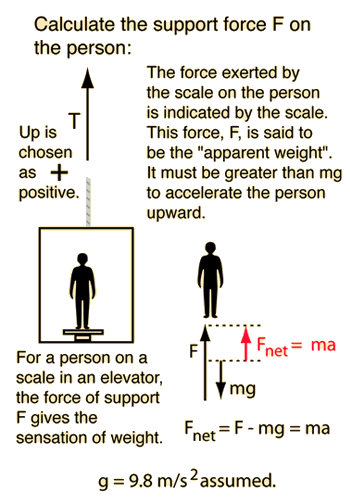Blogs
Our community blogs
-

- 29
entries - 11
comments - 4180
views
Recent Entries
Latest Entry
Tipsy
Did anyone else watch that show Minute to Win it? As I was trying to think of something the write my last physics blog post about I thought of one task in particular that contestants were asked to complete. The game was called “Tipsy.” To win, the contestant had to balance three soda cans on their edge by drinking some of the soda to the perfect level. The reason that this task is possible is because of physics and center of gravity. As the amount of soda in the can decreases, the center of gravity of the tilted can shifts as the weight of the can changes due to less liquid, and eventually it is able to align with the vertical line up from the balanced edge of the can. So I was going to just attach a video of the "blueprint" for the task but I found a video of a bunch of college students getting real hype about it so I decided to include that instead:)
- Read more...
-
- 0 comments
- 29
-

- 30
entries - 17
comments - 4705
views
Recent Entries
Latest Entry
Laundry Mishap
About a week ago, I walked down into the basement to check on my laundry only to find a large puddle of water on the floor. We had temporarily fixed the pump that brings the water from the basement up into the septic but it seemed to have broken again. We need pumps for appliances below our septic tanks because the water does not have the ability to move from low to high (high being the location of the septic tank; low, my basement) without an external system doing work on it. Because of gravity's natural pull downwards, water wants to go down. To go up the pump must create power to do the correct amount of work to push the water up into the septic. Without it, the water overflows the location of the pump and floods the basement.
- Read more...
-
- 0 comments
- 30
-

- 30
entries - 13
comments - 5570
views
Recent Entries
Latest Entry
Calculus Pup
I just returned from a calc group session at school with my friends and our calculus teacher. My friend, in an attempt to make Taylor Polynomials and series less of a burden, brought along her little dog. Ironically, as I was sitting there, the pup inspired what I am afraid will be my final blog post of my AP Physics C year. Well, my friend had gotten up from her seat, and the dog, which was tied by a leash to the chair, wanted a change of scenery. As a result, she attempted to jump onto the very chair which she was tied onto. However, as soon as her paws came in contact with the chair, she skid across the surface of the chair and nearly fell off the opposite side. So, what did the little doggy fail to consider in her take off towards the chair? Well, there are a few factors. First off, when the dog took off from her hind legs, she made an angle with the floor; she had both horizontal and vertical components to her velocity. As a result, when she hit the peak of her trajectory path, hence landing on the chair, her vertical velocity was zero, but her body continued to move in the horizontal direction due to the horizontal component of her velocity. In addition, because the surface of the chair is slicker than most surfaces, resulting in a lower coefficient of friction, there was little frictional net force present in order to decelerate her horizontal velocity. Ideally, in order to prevent any skidding, the dog would simply have jumped completely vertical and landed on the chair, hence having zero horizontal velocity (this application is not ideal, however, because it would involve the dog jumping through the solid seat of the chair, which is impossible and would hurt, to say the least). However, a large angle with the horizontal would increase the sine component of her velocity and minimize her horizontal velocity, and therefore skidding.
- Read more...
-
- 0 comments
- 30
-

- 30
entries - 17
comments - 4253
views
Recent Entries
Latest Entry
Really Tall Things
Mankind likes big things. We like gigantic iPhones, Venti Lattes, and skyscrapers. The pyramids of Egypt represent perhaps man's earliest obsessions with making big things. As children, we stack wooden blocks until they topple and injure the cat. We are a species obsessed with bigness. But how big could we build? The current tallest building in the world is pretty big, but it's miniscule compared to the towering peak of Mt. Everest. The world's tallest buildings keep getting bigger, but eventually there comes a point when it is impossible to keep building upward. Or is there? In 1895, Konstantin Tsiolkovsky proposed a structure known as a space elevator. Such a structure would begin on Earth and stretch all the way out into outer space. But wouldn't it crumble under its own weight? Normally yes, but this isn't your average game of Jenga. A structure in orbit experiences an apparent centrifugal force that increases the farther out in space an object gets. How and why demands a separate blog post, but given that parameter, a structure as tall as a space elevator would be able to support its own weight because the top section would experience a net force outward that cancels out the gravity that would cause the structure to topple. Therefore, it would theoretically be possible to create a space elevator. Unfortunately, there would still be a ton of forces involved, making most materials useless. However, scientists have postulated that carbon nanotubes might be strong enough to be used in such a project. Even so, the space elevator is a long ways away, but should it come to fruition, it would make transporting packages into space immensely less expensive. Plus, it would probably look awesome.
- 30
-

- 33
entries - 8
comments - 2844
views
Recent Entries
Latest Entry
Sunflower Seeds
As I'm sure many of you know eating sunflower seeds is a very popular task and one that is full of physics. Such as when you are biting down on the seed to crack it you are putting a force down onto the seed that is needed to crack but did you know that the seed is putting a force onto you. Indeed the seed is putting a force onto you called the normal force. This helps allow you split the shell. Now when you spit out the sunflower seed you are doing a kinetic equation that will affect the distance that you are able to spit the seed. Such as if you want to spit the seed farther you have to give it an initial velocity. Then this in turn will give it a larger displacement and will result in a final velocity of zero because the seed will have landed on the ground. This is the physics involved in spitting out sunflower seeds.
- Read more...
-
- 0 comments
- 33
-

- 17
entries - 12
comments - 2498
views
Recent Entries
Latest Entry
no more cracks
As of last week, I upgraded from a cracked, partially missing screen on my Iphone 5c to the Iphone 6s. I was super excited to actually read my screen!! When I was at the store, I was strongly advised (probably from the looks of my old phone) to purchase a glass screen protector. The salesman said the glass was designed to take all the force if one were to drop their phone. He said the glass was similar to that of what the military uses (for what, I do not know). I am curious what properties of glass alter it's durability. Or other questions come to mind as well: if any glass is layered on top of the phone, will it protect it just as well? I also wonder how the force protects the actual screen from cracking. I hope the screen does it's job because with my track record, I'll have my phone shattered in a few months. On the plus side, even though the screen costed me $40, there is a lifetime warranty!
- Read more...
-
- 0 comments
- 17
-

- 8
entries - 3
comments - 1646
views
Recent Entries
Latest Entry
Senoritis
What is senioritis? As Juniors we all hear about it, we even claim by the end of the year that we have been contaminated by this disease. But not until senior year do we realize that we only had a small touch of this so called senioritis and left untreated over the summer days just worsened these symptoms. Senior year requires more and more responsibility and gives us the most freedom we have experienced in our 16 years. Balancing everything from school to volunteering to sports to college and life it can be over whelming. With all this responsibility doesn’t feel like there is freedom. In search for a break and our so called freedom we in a way shut down and become lazy and only do things we want to do instead of care for our new responsibility. Once it hits us that we need to get back onto the merry go round that never stops, it is hard to get back into the swing of things. There life is a reflection of newton’s law that states, an object at rest stays at rest unless acted upon an outside force. Object = us the humans, rest= ignoring our responsibilities, outside force= realization of this so call merry go round. Also to understand life we must understand Freedom=Responsibility
- 8
-

 Latest Entry
Latest Entry
Workplace Physics
This is a story about my work and physics.
I am not telling you where I work, but I just know I am a busser, and I am very good at it. So a few of the people I work with know I love science and math and physics. One of them actually majored in science so we discuss it a lot. I'll call them S. So S was carrying a tray at just the right position where it was almost straight up and down. (Perpendicular to the floor) Someone asked how the heck he can do that and I answered saying that it was static friction and that since the forces on the plate were just so, the plate would not move unless he tilted his hand more. Which he did and it fell and everyone told me I was smart.
More will probably come because I work with some really cool people who like to talk about physics with me.
-
 Latest Entry
Latest Entry
Why do magnets repel?
One of the most exciting things about learning physics is that we get to start to try to answer "why" questions: why is the sky blue? why does the Sun rise in the East?
Learning new and modern physics can be thrilling because of the explanatory power of the theories we read about and the experiments that have been done, but sometimes we should return to these "why" questions and really examine what it means to answer a "why." One of my favorite physicists to read and learn from is Richard Feynman, and here's his take on why questions. He challenges us to consider how we answer a why question, and what implications this might have for us as students of physics. Enjoy!
- Read more...
-
- 0 comments
-

- 12
entries - 5
comments - 3761
views
Recent Entries
- 12
-

The European Organization for Nuclear Research known as CERN was founded in 1952. Since then more than 80 countries have been contributing to the research done in the particle accelerator and trillions of dollars have been invested. Many argue that the money spent could have been invested in humane projects rather than spending it on research of tiny particles in huge machines under the ground that go through multiple countries. But most of us don’t know the great benefits the research provided us in the past years which greatly justifies this investment. The research provided the discovery of cancer therapies, monitoring nuclear waste, helps to save tons of electricity in power transmission, the discovery of the MRI, and the greatest of all a better understanding how our Universe works.
-

- 15
entries - 12
comments - 4361
views
Recent Entries
 Latest Entry
Latest Entry
Physics of hitting parked cars
I just hit a parked car (I did not do a hit and run i waited and hour for the people to come to there car) I was trying to pull around a bend into a front row spot i thought i cleared the car that was next to mine. Unfortunately, my depth perception was wayyyyy of! Because i drive a big truck it was hard to judge the distance between my car and the tiny little car that i hit. I then hit the car and the energy from my car was transferred from my car to the tiny car. The tiny car then moved after my car hit it and stopped. Then i went into reverse and pulled into the spot to asses the damage that was done. I look at the little car. The dent on its bumper was as deep as a giant cereal bowl. Like you could eat 2 servings of your lucky charms out of it. After the panic was gone i realized how much physics was involved in stupid mistake. Anyways, I then thought oh god i can't even imagine what my car looks like! I then walk to the front corner of my front bumper to see the damage. My ol trusty rusty only had a scratch on it no dent at all. I thought how could this be then I realized that the Force i applied on the tiny car must have been so much because my car was so much bigger. Fnet= Ma. So I was taking a corner at a speed/velocity of 4 m/s.The mass of my car is 2143.22 kg. and I was accelerating at a speed of about 4 m/s squared. therefore the force applied to little car 8,572.88 newtons. Then i though about how my car made the little car move! Bucky must have had to put forth a lot of work. Bucky is the name of my car. Work, W=fd. The displacement from where my car was and by the time i hit the tiny car was probably about 1 meter. So the work exerted by Bucky 8,572.88. N Thats a lot of work! poor Buck! SO the morel of the story is never go for the front row spot! Park out in east jesus because trust me the walk will be much better than exchange insurance info with a pissed off lady.
- 15
-

- 16
entries - 13
comments - 3852
views
Recent Entries
Latest Entry
physics of silly games
A slinky is an extremely fun toy if you are 3 years old, or even 73 years old! The way it transfers energy back and forth throughout it is very similar to a wave. A wave can either be longitudinal or transverse, but in this case, a slinky is like a longitudinal wave. It bunches up at some points, but then expands out with different distances between each metal ring. Waves are found in every day life such as jump rope as well. As you spin the rope constantly around, it represents half of a wave. If you were to play the "Jumping over the rope game" as we used to call it in the olden days, waves are traveling through that rope even more. As you get a steady pace on the rope, more waves are in it. If we wanted to find the speed of the rope, you could use the equation v=fh( h=wave length). You would measure the rope and then calculate how long it is and how long it would take for the wave to hit the crest 10 times. This would give you the frequency and wave length of the wave. Waves are every where and can be tons of fun!
- 16
-

- 30
entries - 6
comments - 8264
views
Recent Entries
 Latest Entry
Latest Entry
Optical illusions
Many of us enjoy looking at optical illusions, but why do our eyes lie to us?????
Although each illusion has it's own reason, and scientists still don't know all the reasons, it comes down to one thing. Our brain makes assumptions.
Our brain uses context of our surroundings to make split second assumptions. This is helpful in everyday life and back when we were hunters and gatherers and needed to make split second decisions in the wild. Our eyes don't show us what's really there just what we need to see. It uses the surrounding environment to make conclusions. This is done by using shadows, surrounding colors, and past experiences.
optical illusions are just a case of your brain telling you what you should be seeing, not what is actually there.
- 30
-
 Latest Entry
Latest Entry
Kayaking
I go camping on the lake a lot with my family, and one of my favorite things to do is to go kayaking. Kayaking uses Newtons third law, because as I push the water back, the water exerts the same force back onto my paddle, pushing the kayak to move forward in the water.
-

- 15
entries - 7
comments - 6196
views
Recent Entries
- 15
-
 Latest Entry
Latest Entry
Archery
we are starting the archery unit in gym and I was wondering what the physics we behind it. I did some research and I found some pretty cool stuff about it, I found that when aiming archers generally aim to one side of their target and the arrow straightens out during flight. the arrow is able to straighten out because the fishtail at the end of the arrow oscillates causing the arrow to move back towards the center.
- Read more...
-
- 0 comments
-

- 15
entries - 9
comments - 3595
views
Recent Entries
Latest Entry
Paddle Boarding
In July, I will be taking a vacation to the beautiful island of Turks and Caicos as a gradation present. At the resort, there are many excursions to choose from. However, the coolest one that I saw was a paddle boarding adventure through a cove with iguanas. Though paddle boarding may look easy, I imagine that there is a lot of physics involved and that it it a lot harder. The rider has to apply enough work and force to the paddle in order to propel the board forward. This can prove to be a struggle if you don't have enough force to propel yourself through the different currents.
- 15
-

- 6
entries - 0
comments - 1869
views
Recent Entries
Latest Entry
showers
Taking a shower also involves physics in many different ways. The only way the water can get out of the faucet and turn on is using some kind of force that exerts the water upwards to take a shower. Also, the different temperatures are important too so when you are turning it to warm or cold that involves friction making it not too easy to turn it so you don't make it too hot or cold.
- Read more...
-
- 0 comments
- 6
-

- 15
entries - 2
comments - 3398
views
Recent Entries
 Latest Entry
Latest Entry
How you can dodge a bullet
I saw this on myth busters, and I decided, even though they said it was not possible, I can still try, or dream of trying at least. It is possible to dodge the bullet of a sniper rifle. If the sniper rifle were far enough, that is.
When the sniper rifle shoots the bullet, 3 components travel towards the target. Light waves, sound waves and a bullet. Light is faster then the bullet and the sound. Having said that, if the sniper was far enough to have a reasonable amount of time between the muzzle flash and the sound getting to you, it is possible to get out of the way. As soon as someone sees the muzzle flash, they could get out of the way, before the sound and bullet get there.
Having said that, DO NOT TRY THAT. it's not possible. I just needed a good story that people would read. It's possible in theory, but never a good idea by any stretch.
- Read more...
-
- 0 comments
- 15
-

- 10
entries - 0
comments - 2487
views
Recent Entries
Latest Entry
physics is the nba
Basketball also has plenty of physics as well. You have plenty of force from when you block someone sends a shot into the stands or dunk on someone. Also their is force from when you dribble the basketball that is how physics is incorporated into basketball.
- Read more...
-
- 0 comments
- 10
-

- 4
entries - 1
comment - 1978
views
Recent Entries
 Latest Entry
Latest Entry
The Physics of Riding an Evelator
Today I rode about 3 billion elevators over the course of 8 hours. Acceleration plays an important role in elevators. When an elevator goes up a floor, acceleration is going down and when the elevator is going down a floor, acceleration goes up.
- 4
-

 Latest Entry
Latest Entry
Scorpion Season 1 Episode 8: "Risky Business"
It's everybody's favorite physics problem: the elevator! One does not learn mechanics without encountering the elevator problem (as far as I know). This is an interesting, sort of different take on it though.
I'll be honest, the first I saw this I had no idea why Walter and Toby were tying their belts to the elevator bars. But it all makes sense about 5 seconds later when a rather...well....happy Happy stopped the elevator very suddenly. The belts looped around their arms and the elevator bars keep the duo from a painful collision with the ceiling of the elevator, a fate their captors cannot avoid. By why do they slam into the top of the elevator when its acceleration is downward, why don't they hit the ground instead?
Let's start with what we know about elevators.

So this is pretty nifty! We are looking at the "accelerating downward" one. What we know is that while the elevator accelerates downward, the net force on the person is actually upward. This occurs due to the support force of the cable holding the total weight of the person and the elevator. We know from this that the net force (F=ma) on the person is total support force minus the force of gravity on the system. Therefore the net force on the person is less than their actual weight (thus the idea of weighing less in a downward accelerating elevator). What does this have to do with our problem from the episode? Well, we know from looking at this that person doesn't actually float (as much as I'd like that to happen) when the elevator moves down, but the contact force between the person and the floor of the elevator has lessened since the normal/net force on the person is less. Now we bring in the idea of inertia. The human body, in this case will want to stay at rest with in the elevator, so we are not seeing the people accelerate upward but rather the their bodies attempting to stay in place the elevator floor "falls out" from under them (so to speak). Their bodies will attempt to remain still as the elevator moves downward in short bursts and thus they are thrown into the ceiling. Well, Walter and Toby aren't, they have their belts. Although, I do wonder how they did not break an arm or something.
Anyways, that's all I've got to say, so thanks for reading!
-

- 30
entries - 8
comments - 9476
views
Recent Entries
 Latest Entry
Latest Entry
Potato Battery

Building a potato (or lemon or apple) battery reveals a bit about the inner workings of electrical circuits. To do this simple science experiment, you insert two different metallic objects often a galvanized (zinc-coated) nail and a copper penny into the potato, and connect wires to each object with alligator clips. These wires can be attached either to the two terminals of a multimeter (which measures a circuit's voltage) or to something like a digital clock or lightbulb. (It may take two or three potatoes wired in series to generate enough voltage to power those devices.)
The potato acts like a battery, generating a current of electrons that flow through the wire. This happens because acid in the potato induces a chemical change in the zinc that coats the nail. The acid acts as an "electrolyte," ionizing the zinc atoms by stripping two electrons from each of them and leaving them positively charged. Those electrons are conducted away from the zinc ions through the wire and through whatever devices lie along the circuit and end up at the copper penny. From there, they join up with positive hydrogen ions in the potato starch that have been repelled there by the nearby zinc ions. The movement of these electrons is enough to power a toy clock or light bulb.
- Read more...
-
- 0 comments
- 30
-

- 14
entries - 4
comments - 3221
views
Recent Entries
Latest Entry
Warm Weather!
Finally the weather begins to warm up which mean it's time for flip flops! As I walked through the commons the other day wearing my flip flops, I noticed how slippery the tile floor was... luckily I did not fall! Then I thought about wearing flip flops in the winter and how often I would fall due to the slippery ice, not to mention my feet would be very cold. I came to understand just how important friction is in the winter because, without it, we would be sliding and falling all over the place. The soles of winter shoes, for example, tend to be very grippy and have lots of ridges in them. These ridges provide the shoes with a less likely chance to fall over on the ice because they create more friction. Also, there are snow tires many people buy for their cars during the winter because the roads get very icy and these tires provide more friction between the car wheels and the ices, which will prevent the car from potentially getting into an accident. Good thing car tires manufacturers as well as shoe companies took into consideration all the physics that goes into creating more friction because otherwise people would be falling and getting into car accidents more frequently. And on the bright side, we don't need to worry about this for a while since spring has finally arrived!
- Read more...
-
- 0 comments
- 14
-
Recently Browsing 0 members
- No registered users viewing this page.





